Pranayama
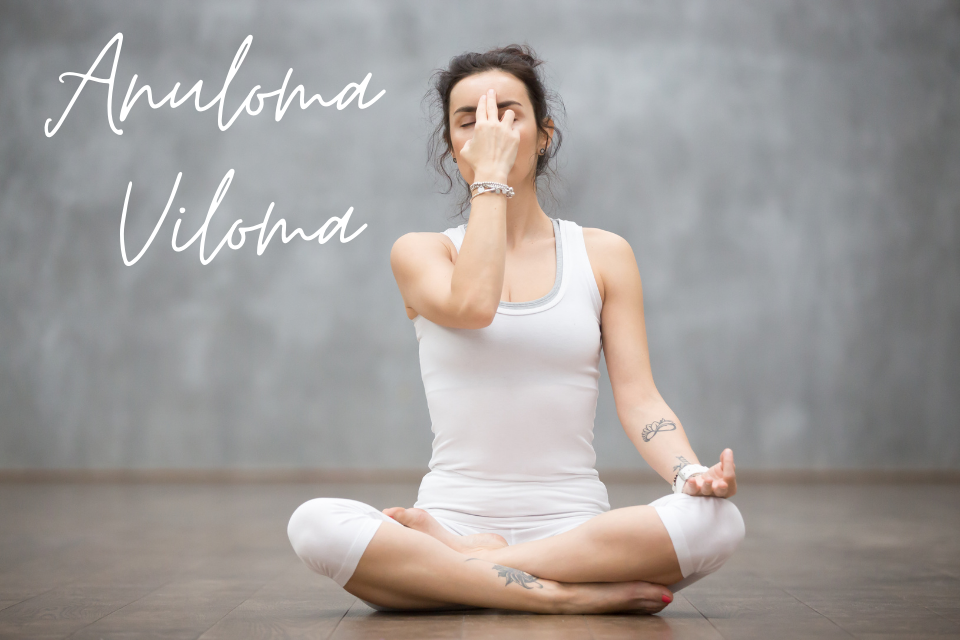
Pranayama
Pranayama is the formal practice of controlling the breath, which is the source of our prana, or vital life force. Pranayama is the conscious awareness of breath: the life force that both energizes and relaxes the body. Prana means life force or breath sustaining the body; Ayama translates as “to extend or draw out.” Together both mean breath extension or control.
Pranayama is the art and science of yogic breathing techniques, and these techniques will reliably produce the benefits such as physical well-being, lightness of heart, clarity of mind, the ability to quickly increase our energy, release stress, inner and outer health and fulfillment, purpose, intention, and direction
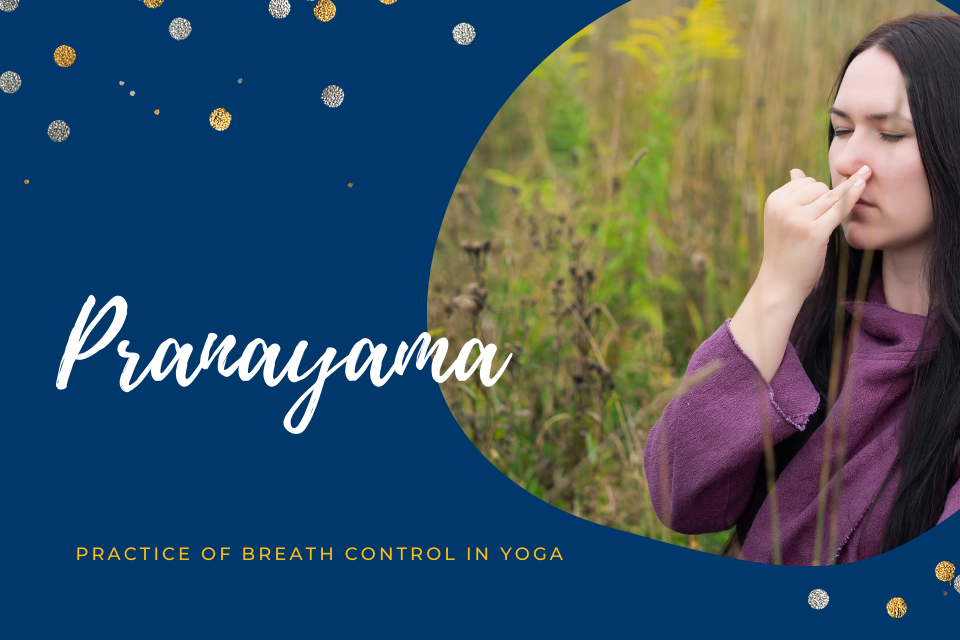
Benefits of Pranayama
The key to healthy and happy living may lie in right breathing. When we attend to our breath, it brings us to the present moment, increases our self-awareness, and brings a sense of calm.
Pranayama goes a step further than simple awareness of the breath, using specific rhythms and techniques to bring us numerous benefits on the mental, emotional and physical levels.
- Calms the mind, reducing worries and anxieties
- Can aid with healthy eating habits and weight loss
- Acts as a stress reliever
- Improves focus and attention
- Boosts the immune system
- Rejuvenates the body and mind
- Helps in detoxification
- Improves concentration
- Helps to treat sleep disorder
- Good for skin health
- Helps improve digestive system function
- Strengthens the respiratory system
- Good for nasal passages & sinuses
- Improves cardiovascular health
- Increases energy, bringing enthusiasm and positivity
- May even slow down the aging process
Spiritual benefits of pranayama
One can hardly make any spiritual progress without the practice of Pranayama, whether it’s the slow breathing or fast breathing. It calms your mind by muting the unnecessary chatter going at the back of your head. As pranayama increases the olfactory senses, the fragrance and smell in the environment also becomes a relieving factor and helps our mind and soul to rejuvenate. All the physical and psychological benefits of yoga and pranayama eventually brighten the spiritual aspect of your life.
Yoga is the union of self to the higher self, i.e. the body and soul grow together for connecting you to the ultimate divinity of the Universe. Pranayama being an integral part of Yogic practice helps to manifest the same. It enhances your clairvoyance and sixth sense. Your wisdom achieves its highest state and you start exhibiting the highest potential in decision making and actions. It also helps the resolve to acquire divine virtues like love, patience, forgiveness, devotion to duty and unselfishness.
Hence, pranayama is not only an exercise to regulate your Prana but also channelizes the positive effects it has on your overall body, mind and behaviour.
Things to keep in mind before practicing Pranayama
Though most forms of yoga are safe to practice across the board, it is advised that people who want to practice different Pranayama’s should at least have some prior experience doing yoga. And it is best if Pranayama is practiced under the supervision of a guru.
Certain breathing exercises are not advised for the following people:
- Those who suffer from hypertension or low blood pressure
- Those recovering from a recent heart attack
- Those with chronic heart conditions
- Pregnant women
- Women who are menstruating
- Those with bronchitis or severe breathing issues
- Practice Pranayama on an empty stomach
- Do it at your own pace. If you feel dizzy, increase the duration of the breaks.
Types of Pranayama and Their Benefits
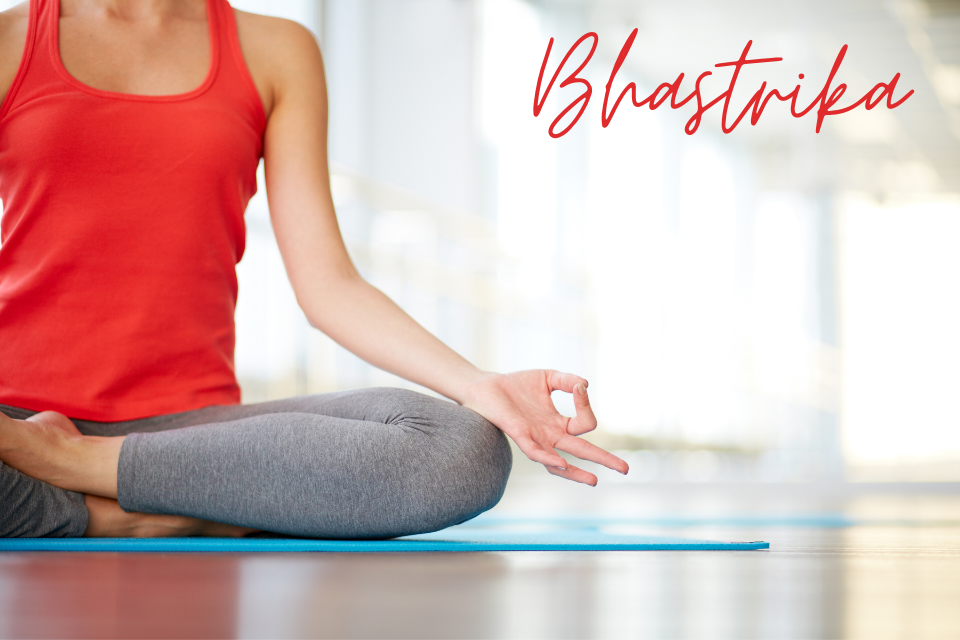
1 – Bhastrika Pranayama
Bhastrika means bellows in Sanskrit. This breathing exercise resembles the blowing of bellows. Bhastrika is the excellent breathing exercise which we can practice slowly or fast as per our convenience. In this pranayama, the body gets the maximum amount of oxygen due to complete inhaling and exhaling breathing. Bhastrika involves a rapid and forceful process of inhalation and exhalation powered by the movement of the diaphragm. The movement of air is accompanied by an audible sound. One inhale and exhale equals one round of bhastrika, and it may be repeated for many consecutive rounds.
Bhastrika Pranayama Technique
There are many breathing techniques in yogic tradition which rejuvenates dormant cell of the body by energetic contraction and expansion of respiratory organs. Bhastrika is one of those energetic breathings which involve heavy breathing through nostrils.
In Bhastrika pranayama one requires control over the diaphragm. During this practice, it is very common that one may start feeling dizzy and feel hyperventilated. Therefore to do this pranayama effectively one has to gradually develop control over inhalation and needs to regulate it consciously to avoid dizziness. This entire practice should be performed in a relaxed state of body and mind.
Practice of Bhastrika pranayama fans the digestive fire and massages all the internal organs of the body. During the process, there is an intense activity of the diaphragm and the lungs which result in a better-oxygenated supply of the blood to all the different areas of the body and brain especially.
How to practice Bhastrika Pranayama?
- Sit comfortably in Siddhasana or Padmasana with spine erect and aligned with neck. Place your hands in Dhyan mudra to concentrate on your mind.
- Take a few deep breaths in and out followed by consecutive expanding and contracting of abdominal muscles and lungs with your Prana movement.
- Begin bellows breathing by increasing the pace of deep breathing.
- To do this, inhale forcefully and quickly through nostrils by rapid expanding of the chest and abdominal muscles. It will fill your lungs with a sufficient amount of oxygen.
- After rapid inhale, exhale in the same manner by contracting your abdominal muscles and thus forcefully expelling toxins out from the body through the nose.
- One rapid inhale followed by rapid exhale counts as one breathe of bhastrika.
- Do ten such breaths to complete 1 round of Bhastrika Pranayama
Practice Tips
- Practice 3 rounds with pause in-between rounds. Start your pranayama practices with the Bhastrika pranayama followed by the Kapalbhati Yogic breathing. Do it at your own pace. If you feel dizzy, increase the duration of the breaks.
- Never practice Bhastrika on a full stomach or at night.
- People suffering from Heart problems, Hypertension high BP, fever, vertigo, pregnancy, intestinal disorders, migraine, and spinal abnormalities should refrain from practicing this pranayama technique.
- Try to increase the count as the stamina increases.
- Start the pranayama process with bhastrika pranayama after that go for other pranayama.
Benefits of Bhastrika Pranayama
- Supports parasympathetic nervous system and benefits the motor system.
- Helps in allergies, asthma, sinus, bronchitis, other respiratory issues, tonsil, and thyroid.
- Favourable effect on the digestive system.
- Natural energizer that vitalizes the body and mind.
- Harmonizes the three doshas of the body: Vata, Pitta, and Kapha.
- Oxygenates the blood increasing the vitality of all the organs, tissues and helps to remove toxins and impurities
- Drains excess phlegm from the lungs.
- Improves our immune system.
- Best for those who are facing the problem of low blood pressure.
- Checks Sleep Apnea. This Pranayama is medicine to check and treat this problem holistically.
- Our heart and head get adequate quantity of fresh and pure air by which our health is improved.
- Treats Fibrosis – effective in treating the condition in an efficient manner.
- Good for Depression, it is a safe method of dealing with anxiety issues for yielding positive results.
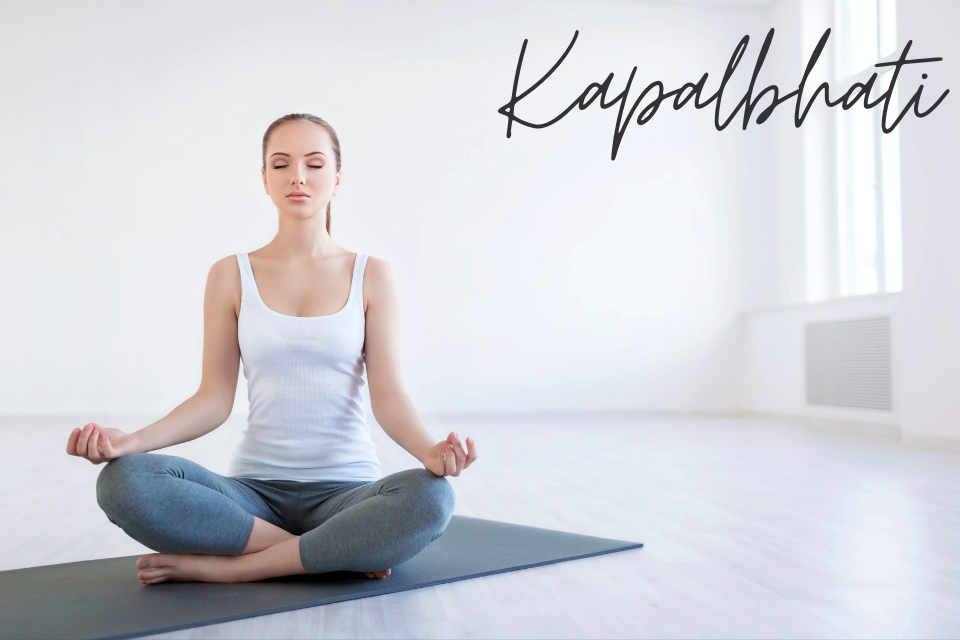
2 – Kapalbhati Pranayama
Kapalbhati is a yogic technique in which belly intentionally draws in to produce forced & sharp (active) exhalations through nostrils followed by automatic passive inhalations. In Kapalbhati, it becomes a practice to consciously watch your breath and movements of inner organs while Prana drawing in and out of the body. Traditionally, the practice of Kapalbhati is preferred in some seated yogic asana while maintaining a balance of ease and effort. After getting comfortable into the pose, begin Kapalbhati breathing; draw your belly in to force your breath out in shorter intervals of inhaling.
Kapalbhati Pranayama Technique
The technique of Kapalbhati pranayama is performed by reversing the normal breathing cycle. By making inhalation passive and exhalation active. It initiates action by activating the vertical movements of the diaphragm in the body. During the practice, exhalation is forced out of the body by contraction of abdominal muscles and upward movement of the diaphragm followed by subsequent passive inhalation and relaxation of abdominal muscles. Normally Kapalbhati pranayama is performed at the rhythm of each contraction per second. But later on with practice, rhythm of the breath can also be increased.
How to practice Kapalbhati Pranayama?
- Sit on a hard surface with your spine erect to start with the process of Kapalbhati pranayama.
- You can either sit in a sukhasana (your legs crossed), Virasana (your legs bend and your shins tucked in under your thighs or on a chair while performing this pranayama.
- Place your hands on your knees with the palms facing up or you can place your hands one over the other in your lap for higher focus.
- Inhale air with both the nostrils.
- Exhale the air with a little forceful action and again breathe in.
- You can put your hand on your lower abdomen to feel the air gushing out of the body.
Practice Tips
- It should be one stroke per sec, in condition of any health issue go slow. You should practice Kapalbhati pranayama 10-15 minutes for maximum benefits
- Morning is the best time to practice Kapalbhati pranayama; you can practice in evening also. Open area is an ideal place for breathing exercises
- If you have acid or heat-related gastric problems, such as ulcers you should use caution with Kapalbhati Pranayama.
- Avoid Kapalbhati in case of high blood pressure, heart disease, stroke or epilepsy.
Benefits of Kapalbhati Pranayama
- Its prime physical benefits are weight loss as it works up the respiratory system as well as the abdominal muscles. The breathing technique increases metabolism which supports weight loss.
- Kapalbhati is a traditional practice for internal cleansing. It cleans all the toxins which are present in any form.
- Improves the function of the digestive tract as well as absorption and assimilation of nutrients which is vital for better health.
- Improves the function of kidneys and liver.
- Kapalbhati triggers your abdominal region, helps in controlling blood sugar level and hence beneficial for diabetic patients.
- Calms your mind and rejuvenates your digestion system
- Improves the blood circulation problem in whole body
- Drastically reduces the risk of developing hernia.
- Helps in controlling obesity, reduces belly fats and getting rid of other excess fats.
- Adds lustre as well as beauty to the face and makes it more radiant
- The breathing technique helps reduce stress in the eyes, thus curing dark circles around the eyes.
- Clears the mind and helps in controlling the thoughts which essentially lead to increased concentration, focus and peace of mind.
- Helps in allergies, asthma, sinus, bronchitis and other respiratory-related problems.
- Daily practice of Kapalbhati can cure all general intestinal problems.
3 – Ujjayi Pranayama
In this breathing exercise, the process of inhalation and exhalation are both done through the nostrils. During the process of inhalation the “ocean-like sound” is formed by moving the glottis as air passes in and out.
The sound is produced because of the friction of air within the throat; a typical sound like the ocean is made. (The sound is completely different from the sound emitted from the larynx) hence, the Pranayama is termed as Ujjayi Pranayama. By this, it is also called as “Sound Breath” or “Ocean sound breath”.
How to practice Ujjayi Pranayama?
- Be seated in a comfortable position. Relax and be comfortable.
- Gently close your eyes and relax your mouth and jawline.
- Practice deep sessions on inhalations and exhalations. Feel the air passing through your wind pipe as you practice the process.
- During exhalation try to softly utter the sound “ahh” from your mouth.
- Once you become comfortable with the exhalations, maintain a contraction at the back of your throat on inhalation.
- Once you get comfortable with this practice, use only the nose for breathing, keeping your mouth shut.
- Concentrate on the sound of your breath, which should be audible by now. The inhalations should be able to fill your lungs to the fullest.
- You can start this pranayama for 5 minutes in the beginning and increase the time period up to 15 minutes once you become familiar with the set up.
Practice Tips
- People who are suffering from any heart disease and high blood pressure shouldn’t combine Bandha and breathe retention in this pranayama.
- Don’t tighten your throat during this pranayama.
- If you are a beginner then keep the duration of this Pranayam short.
- If you are a patient of hypertension refrain from practicing this pranayama
- If you feel a little warmth in the back of your throat, do not worry. It is normal.
- If you feel dizzy, discontinue the process and start breathing normally.
- Make sure under any circumstances the proportion of the breathing is not forced.
- Practice it early in the morning before sunrise or after 5-6 hour of your meal.
- Practice it after Kapalbhati Pranayama and before Bahya or Anulom Vilom Pranayama.
Benefits of Ujjayi Pranayama
- Very helpful in Asthma problem and other respiratory diseases.
- Increases the concentration power.
- Beneficial to those who have stammering and lisp problem.
- Very helpful in clearing blocked arteries and regulates cholesterol
- It lowers the risk of heart attacks.
- This pranayama is very suitable for those who have cough, sinus, and allergy problems.
- Beneficial in indigestion, liver problems, dysentery, fever, cataracts, Rheumatism and migraine also.
- Ujjayi Pranayama can cure your thyroid problem.
- It boosts the focusing power of the mind
- The body becomes healthy and strong
- It generates the internal heat
- Gives a positive attitude
- Practicing this pranayama on a daily basis helps to increase the blood circulation throughout the body and stimulates the overall body metabolism.
- By practicing this pranayama regularly, you can bring positive changes to your physical, mental, emotional, and spiritual well-being.
- Ujjayi Pranayama helps the body to get rid of toxins that have accumulated over a period of time.
- Practicing Ujjayi Pranayama helps to release tension. Additionally it also helps to diminish headaches and provide relief from sinus.
- Beneficial in snoring problem.
- Helps treat the sudden stopping of breath while sleeping at night (Sleep Apnea).
- It is also beneficial for throat mucus.
4 – Bahya Pranayama
“Bahya” means “external/outer” and “Pranayama” means “expansion of life energy” i.e. Bahya Pranayama meaning external Breath or External retention.
In Bahya Pranayama, our inner powers are awakened from the cortex to the Sahasrara Chakra. The Bahya Pranayama is practiced after Kapalbhati Pranayama and before Anulom Vilom Pranayama. The Bahya Pranayama is generally the combination of 3 Bandha i.e. Jalandhar Bandha, Uddiyana Bandha, and Mula Bandha. With this Pranayama, the power of Kundalini can be awakened. By doing Kapalbhati Pranayama, the energy of Muladhara, Swadisthan and Manipur Chakra is awakened. Bahya Pranayama takes this awakened power to the next level.
How to practice Bahya Pranayama?
- Sit in any comfortable posture like Padmasana, Siddhasan, and Sukhasana.
- Take a deep breath and exhale completely.
- After exhaling hold the breath out.
- After holding the breath out you have to apply 3 bandha now –
-
- Jalandhar Bandha (Chin Lock) – Touch the upper part of the chest by your chin.
- Uddiyana Bandha (Abdominal Lock) – Shrinking the stomach inward.
- Moola Bandha (Root Lock) – Pull the navel and abdominal area in the upward direction.
- Hold this position for 5 to 10 seconds.
- Assume that all your negativity is being expelled from your body.
- Slowly breathe in along with releasing all the three banda in sequence i.e. first release Mula Bandha and Uddiyana and at last Jalandhara.
- Then relax and get back to the starting position.
- This whole process takes 10-20 seconds time
- Repeat this process 5-10 times.
- You can hold your breath outside 10-30 seconds according to your stamina.
- In case you are suffering from neck and back pain, do not move your head down. Just look straight.
Practice Tips
- All Pranayama should be done on empty stomach
- Women should not practice this pranayama during the periods.
- Avoid this pranayama if you are pregnant or if you are planning to get pregnant.
- Patients with cardiovascular, hypertension and high blood pressure do not practice this pranayama
Benefits of Bahya Pranayama
- Helpful in all abdominal complaints (like constipation, acidity, gastric problem, hernia) and cures it completely.
- Bahya Pranayama helps to increase your concentration.
- Regular practice of this pranayama helps immensely to control diabetes.
- Digestion power can be strengthened with constant practice.
- It cures the reproductive issues.
- It is effective to cure hernia.
- Urinary tract infections (UTI) and prostate problems can be eliminated with regular practice.
- Improves the concentration of the mind.

5 – Anulom Vilom Pranayama
This is not just a breathing exercise, but it is a noteworthy yogic technique that involves controlling of subtle ‘Pranic energies’ (or vital force or bio-energies) of our body flowing through specific channels. The controlling of the Prana through regular practice of Anulom Vilom pranayama helps to balance the energies flowing through the Ida and Pingala nadis. This, in turn, stimulates the central channel called Sushumna Nadi. This helps in elimination of free radicals and toxins from the Ida and Pingala nadi and helps to restore a balance between the two hemispheres of the brain. This helps to purify the entire nervous system. Healing and bringing about mental calm, peace, and tranquillity.
How to practice Anulom Vilom Pranayama?
- Sit in any meditative posture either Sukhasana, Padmasana etc.
- Spine should be upright.
- Using the right thumb, block the right nostril. Inhale through the left nostril for 2 seconds. Now block both nostrils and hold the breath for 4 seconds. (Cardiac, Blood pressure patients and pregnant women should not hold their breath while doing this pranayama just keep inhaling and exhaling.)
- Keep the left nostril blocked and release the right nostril. Exhale through the right nostril for 2 seconds. Now inhale through the right nostril for 2 seconds. Block both the nostrils and hold the breath for 4 seconds. Keep the right nostril blocked and release the left nostril. Exhale for 2 seconds from the left nostril. Block both the nostrils. Hold the breath in suspension for 2 seconds. This completes one single round.
- Start the cycle again this time inhaling from the right nostril. Repeat for a maximum of 10 rounds. Try to increase the counts of inhalation and exhalation with regular practice. Try to maintain the ratio of equal counts for inhalation, exhalation, and suspension of the breath while holding the breath for double the duration.
Note: – Anulom Vilom is also called as Naadi shudhi; however in Naadi shudhi you hold the breath for more than 10 seconds
Practice Tips
- Practice it with the empty stomach or after 4-5 hours of the meal.
- If you are very weak or suffering from anaemia, then you should do this pranayama in a very slow manner. Only for 2 minutes.
- Those suffering from heart ailments, high blood pressure should not attempt retention of breath.
- While doing the Anulom Vilom Pranayama, you must imagine that all the impurities within your body are coming out through exhaling. You will feel that your body and mind is getting filled up with positive energy.
- While performing Anulom Vilom Pranayama, you must sit on the ground or a yoga mat while facing north or east. Make sure that your chest, neck and head are in perfect straight line. Keep your spinal cord stretched during the pranayama.
Benefits of Anulom Vilom Pranayama
- Practicing Anulom Vilom Pranayama on a regular basis can help in improving brain activity.
- Best breathing technique for boosting your memory.
- Helps in getting rid of anger, depression, tension, forgetfulness, worry, uneasiness, anxiety, migraine, stress, sleep deprivation and high blood pressure. This pranayama can transform negative feelings and thoughts into positive.
- It can treat various conditions like gastric issues, constipation, asthma, allergic problems, snoring and gastric problems.
- Regular practice of Anulom Vilom helps cure diabetes and blood pressure
- The three doshas, namely, Vata, Pitta and Kapha are regulated effectively
- This pranayama can help in curing fever, arthritis, sinusitis, flatulence, acidity and varicose veins.
- Anulom Vilom Pranayama can cure diseases and problems of the muscular system.
- It can help in improving blood circulation in a major way.
- It can resolve eye issues and ear problems.
- It can balance, relax and energize the nervous system.
- Anulom Vilom Pranayama can help to clear the blockages in arteries and resolve chronic sinus.
- Anulom Vilom Pranayama can help to get rid of headaches.
- It can help in resolving obesity and managing metabolism.
- It can enhance the stamina and strength of the lungs.
- The breathing exercise can remove harmful toxins from your body
- Improves your immune system, so it cures general issues like cough & cold.
- Anulom Vilom is the most suitable Pranayama for all.
- Alternate nostril breathing is an ideal breathing technique for maintaining your heart healthy.
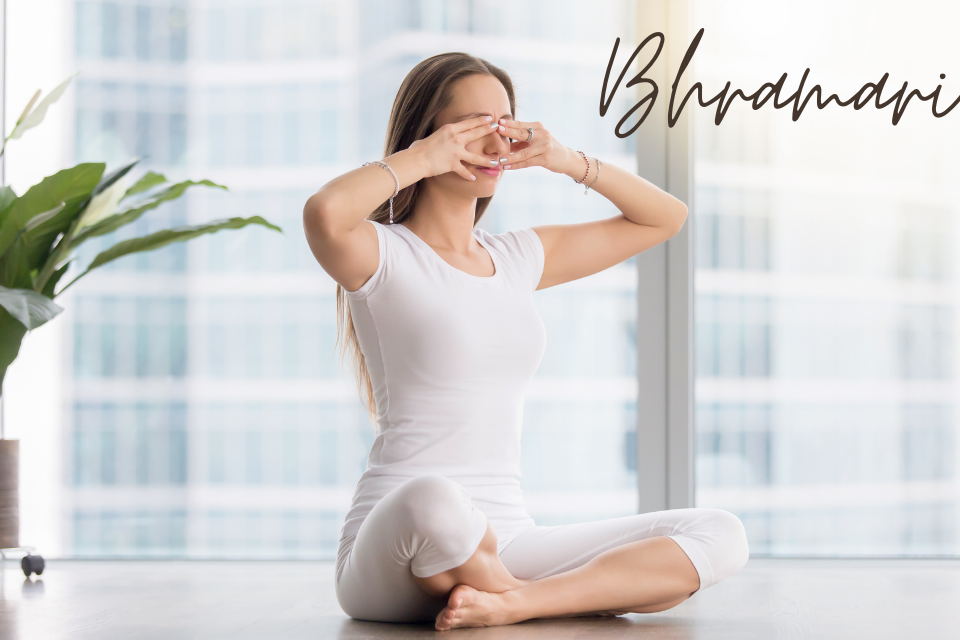
6 – Bhramari Pranayama (Bee breath)
The bhramari pranayama is a slow breathing technique and can be practiced irrespective of the age and gender. The Bhramari pranayama breathing technique derives its name from the black Indian bee called Bhramari. This pranayama is said to activate one of the energy focal centre called “Vishuddhi chakra” located in the throat region, which is responsible for activating the voice box used for speech communication. Bhramari pranayama is effective in instantly calming down the mind. It is one of the best breathing exercises to free the mind of agitation, frustration or anxiety and get rid of anger to a great extent. A simple technique, it can be practiced anywhere – at work or home and is an instant option to de-stress yourself.
How to practice Bhramari Pranayama?
- Sit on the padmasana or any other sitting Asana. Keep a gentle smile on your face.
- Keep your eyes closed for some time and breathe deeply
- Now close your ears lids or flaps with your thumbs.
- Place your index finger just above your eyebrows and the rest of your fingers over your eyes with your middle fingers
- Applying very gentle pressure to the sides of your nose.
- Now concentrate your mind on the area between your eyebrows.
- Keep your mouth closed; breathe out slowly through your nose with making a humming sound of Om.
- Repeat this process 5 times. Important thing is that while doing this pranayama, assume that you are being connected to all the positive energies of the universe.
Practice Tips
- Do Bhramari Pranayama after completing the Anulom Vilom Pranayama.
- Don’t press your ear cartilage too hard while doing this Pranayama.
- Practice it with the empty stomach or after 4-5 hours of the meal.
- Do not put your finger inside the ear but, you have to only gently press the ear cartilage.
- Menstruating or pregnant women should never practice Bhramari Pranayama.
- All age people can try this breathing exercise including pregnant women.
Benefits of Bhramari Pranayama
- Bhramari Pranayama is a highly effective method for enhancing mental concentration and focus.
- This pranayama can open the various energy blockages in our body; provide us with a feeling of elation, relaxation and happiness for the mind and body.
- Bhramari Pranayam is very helpful in removing the heart blockages.
- It is highly beneficial in resolving the signs and symptoms of hypertension.
- It relaxes the mind and lowers stress.
- The vibration of bee breathing has a special effect on our brain hence it is highly beneficial for all diseases like epilepsy, headache, migraine, hypertension, stress, anguish, panic attack, etc.
- Bhramari pranayama is also useful for insomnia patients.
- The breathing technique is extremely effective for men and women suffering from thyroid problems and insomnia.
- It is a perfect breathing technique for managing Alzheimer’s disease.
- Most effective Pranayama for awakening the Kundalini.
- This breathing technique can stimulate the pituitary and pineal glands and improve their functioning.
- It can improve and strengthen our voice, which is why it is highly recommended for singers and actors who need to use their voices articulately.
- When practiced regularly, this pranayama can heal our bodily tissues.
- It improves the quality of our sleep.
- It can help to ease nasal congestion’s and heal sinus infections.
- This pranayama offers a lot of spiritual benefits and can help to awaken Kundalini energy.
7 – Udgeeth Pranayama
Udgeeth Pranayama is the simplest form of pranayama and very helpful in improving concentration. It is also known as Omkari Japa which means chanting of Om. In this, one has to inhale and exhale slowly while chanting Om. While chanting Om, the ‘O’ should be 3 times longer than the ‘m’. This can be practiced for 5 to 10 times daily. The speed of respiration should be slow and subtle that you yourself may not be aware of its sound and even the piece of cotton placed in front of the nostril should not move by the effect of the air exhaled out. This pranayama is very helpful in relieving stress and depression. If this is practiced at bedtime, one will get peaceful sleep without any perverted dreams. Initially, in Udgeeth pranayama, the breath can be felt only in the nostrils but gradually it will be felt deep inside. This visualization of the breath and continuous chanting of Om will lead to Dhyan automatically. Your mind will develop a feeling of concentration and body will be filled with the feeling of Om.
How to practice Udgeeth Pranayama?
- Sit in a padmasana pose. Keep your spine erect and aligned in the head position. Keep your hands in Gyan Mudra.
- Breathe deeply through your nose till diaphragm is full of air.
- Then slowly exhale the breath from your nose in a very slow manner. With the exhalation, chant the word ‘OM’.
- Make sure that the sound of O should be longer than M.
- Your sound should be audible to you & concentration should only be on your breath.
- Repeat this process as many times.
Practice Tips
- Take breath according to the ability of the body, do not practice it forcefully.
- Try to do pranayama early in the morning before sunrise; doing so will give you more benefits.
- Practice it with the empty stomach or after 4-5 hours of the meal.
- If you feel tired during the exercise, rest for a while.
- Do not practice pranayama by sitting in the wrong posture.
- In this pranayama, the inhaling and exhaling duration should be long, slow and smooth.
- Anyone can practice Udgeeth Pranayama including children of old age. You can practice this any time whenever you feel stress.
Benefits of Udgeeth Pranayama
- OM chanting is beneficial in insomnia, stress, depression and all types of mental illness. It relieves tension, anger, and anxiety.
- Udgeeth Pranayama is also beneficial in heart disease, hypertension, migraine pain, epilepsy, etc.
- This yoga practice is also beneficial for patients with schizophrenia.
- By chanting Omkar, the pains in the body can be erased, though the vibrations of Omkar.
- It enhances the power of the brain, increases the concentration level, keeps the mind calm and steady
- It detoxes the body.
- Omkar chanting provides proper benefits even in autoimmune diseases.
- It controls high blood pressure and disorder of kidneys.
- It cures problems related to sleep and bad dreams.
- It reduces falling of hair, premature greying, appearance of wrinkles, and diminution of eyesight.
- Glow in the face and brightness of the eyes also increases. All types of diseases related to the throat are cured
- Helps cure stomach problems — Gas, acidity and other stomach diseases
- Cures nervous problems — practicing this pranayama removes all the problems related to the nervous system
8 – Pranav Pranayama
Pranav pranayama is one of the simplest breathing techniques among all. You can also say this, as 2 or 3 minutes instant meditation. People in all the age group can practice Pranav Pranayama. In Pranav pranayama technique, a person needs to focus on the sound of “Om” while breathing (inhaling and exhaling) normally in & out through nostrils. This process develops a moment of the piece in mind, which is a prerequisite for meditation & that’s why we call this breathing technique Om Meditation breathing.
Note: Udgeeth Pranayama is very similar to Pranav Pranayama as both breathing techniques revolve around a sacred syllable “OM”. Although both of them seem to be similar, there is a slight difference. While doing Udgeeth Pranayama you inhale with a deep breath and at the time of exhaling you chant OM (quite similar to Bhramari pranayama). When we perform Pranav Pranayama, we only focus on the word “OM”, not physically chant it.
How to practice Pranav Pranayama?
- Sit in a cross-legged comfortable position, close your eyes, your head should be straight & put your hands in Gyan mudra or Dhyan mudra.
- At first, focus on your normal breathing by observing the breath entering & leaving at the nostrils.
- Focus on your normal breathing as you inhale and exhale or while normal breathing you can also focus on the word Om in your mind.
- Become centered within yourself and feel your connection with the positive energies which is present in the Universe.
- Do this process for 2 or 3 minutes.
- After two or three minutes raise your hands above your head and rub your palms together for about 20 seconds.
- After that place your palms over your eyes, feel the warmness of your palms over your eyes.
- Now slowly – slowly open your eyes (don’t open your eyes immediately) with your hands still in front of your eyes.
- After that slowly lower down your hands and completely open your eyes.
- You can also increase the time limit from 2 minutes to 1 hour as per your available time.
Practice Tips
- Pranayama should be done on an empty stomach.
- While performing this Pranayama choose a place where you can get fresh air.
Benefits of Pranav Pranayama
- Helps to reduce high blood pressure and heart problems.
- With the help of this, mind becomes steady, lowers mental tension, agitation etc.
- People who are suffering from migraine can get rid of it by the practice of this pranayama
- It also relieves tension, anger and anxiety.
- It is the excellent breathing exercise for meditation.
- Effective against hypertension.
- It cures problems related to sleep (Insomnia) and bad dreams.
- Controls the high blood pressure and cures it.
- This breathing technique is very useful for children with quick-temper, depression & anger.
- It relaxes the mind and lowers stress level.
- Helps in high blood pressure and other heart problems.
9 – Surya Bhedana Pranayama
Surya means the Sun and according to Yoga, the Surya Nadi is the right nostril. In this pranayama, you use your right nostril or Pingala for inhalation and the left or Ida one for exhalation.
A basic purpose of the right nostril breathing is to increase the pranic energy, physical energy and to revitalize the body. It boosts the nervous system, especially the sympathetic nervous system and also increases the efficiency of the digestive system Right nostril is Pingala Nadi, which represents the physical energy of a body. Breathing through right nostril is important for many important metabolic processes.
There are many reasons to do Surya Bhedana (Right Nostril Breathing) pranayama. By practicing a few rounds of Surya Bhedana pranayama each day for a few minutes can help us to control our conscious to some extent.
How to practice Surya Bhedana Pranayama?
- Sit in a comfortable pose. We advise you to sit with your backbone straight and make sure you fill breath in lungs.
- In Surya Bhedana (right nostril breathing) pranayama, inhalation is done only through right nostril and exhalation is done only through left nostril. The thumb is used to close the right nostril and the ring finger is used to close the left nostril.
- Choose a level of exercise, you can easily keep up with and breathe comfortably.
Set your value for inhale, exhale and hold.
A ratio of Inhale, Hold and Exhale is 1:4:2. The ratio 1:4:2 is mentioned in most classic yoga texts.
- Inhale = x sec
- Hold = 2exhale = 4x sec
- Exhale = 2inhale = 2x sec
Pranayama beginners should start with the ratio of 1:1 for inhale and exhale. For instance, if you inhale through one nostril for 4 seconds, then the exhalation from the other nostril should also be for 4 seconds. As you progress, the ratio for inhaling and exhaling can be changed to 1:2, which means if inhalation is 4 seconds, then exhalation is 8 seconds.
Practice Tips
- Do not try this if you have high blood pressure
Benefits of Surya Bhedana Pranayama
- Surya Bheda Pranayama activates the body functions.
- Very helpful for activating the digestive system
- Best for awakening the Kundalini Shakti.
- Surya Bhedana Pranayama cures all diseases that are caused by insufficiency of oxygen in the blood.
- It cleans the frontal sinuses.
- It can destroy intestinal worms.
- Best for winter sessions.
- If you feel cold in your feet or hands then try this.
- It creates lots of energy.
- This can boost the appetite.
- It is the best breathing exercise for cold and cough, asthma, or other respiratory problems.
- Best and simple method in low blood pressure.
- It cures gas problem.
- Useful in Leucoderma and other skin related problems.
10 – Chandra Bhedana Pranayama
Chandra is the Moon, Bhedana means passing through. In Chandra Bhedana Pranayama, left nostril is used for inhalation and right nostril is used for exhalation. It is said that on inhalation, energy passes through Ida (Chandra) Nadi and on exhalation through Pingala or Surya Nadi. These are larger nadis that hold the balance of energy created by the sun and the moon and the magnetism. They travel from the base of the spine to the point between the eyebrows. Chandra Bhedi (or Bhedana) is just the opposite of Surya Bhedi and activates the Ida Nadi that is associated with the cooling aspect and the parasympathetic nervous system.
How to practice Chandra Bhedana Pranayama?
- Sit in a comfortable pose. We advise you to sit with your backbone straight and make sure you fill breath in lungs.
- In Chandra Bhedana (left nostril breathing) pranayama, inhalation is done only through left nostril and exhalation is done only through the right nostril. The thumb is used to close the left nostril and the ring finger is used to close the right nostril.
- Choose a level of exercise, you can easily keep up with and breathe comfortably.
Set your value for inhale, exhale and hold.
A ratio of Inhale, Hold and Exhale is 1:4:2. The ratio 1:4:2 is mentioned in most classic yoga texts.
- Inhale = x sec
- Hold = 2exhale = 4x sec
- Exhale = 2inhale = 2x sec
Pranayama beginners should start with the ratio of 1:1 for inhale and exhale. For instance, if you inhale through one nostril for 4 seconds, then the exhalation from the other nostril should also be for 4 seconds. As you progress, the ratio for inhaling and exhaling can be changed to 1:2, which means if inhalation is 4 seconds, then exhalation is 8 seconds.
Practice Tips
- Do not perform Chandra Bhedana Pranayama in case of Asthma, low blood pressure, cough and cold and problems related to respiratory system
Benefits of Chandra Bhedana Pranayama
- Helpful in reducing the body heat.
- Useful in heart burning problems.
- Very effective in high blood pressure.
- Useful in reducing the fever.
- Useful in reducing the tension, stress and other mental problems.
11 – Sitkari Pranayama
Our mind and body often get stressed by the hot summer heat, which develops a sense of tiredness in us. In these long hours of summer heat, there are some yogic breathing techniques to soothe our body and mind. The term “Sitkari” is used in the Sanskrit language for ‘Hissing’ sound. In Sitkari pranayama, when air is inhaled in through gap present in the teeth, a ‘hiss’ sound is produced
How to practice Sitkari Pranayama?
- Sit comfortably in a cross-legged pose and align your back body in one line. To deepen the breathing effect, you can close your eyes and emulate Gyan Mudra with your hands.
- Now, gently press your upper and lower teeth together, and separate your lips comfortably so that your teeth get exposed to the air.
- Curl your tongue upwards so that lower part of tongue touches the upper palate. (If you aren’t able to curl your tongue, just rest your tongue at the back of the teeth)
- Now breathe-in slowly & deeply through the gaps present in the teeth. Feel the air is filling up your abdomen, followed by chest & neck portion in the end. During your breath inhalation, a small hissing sound will be made.
- Now close your lips (eventually mouth) and exhale through your nose slowly in a controlled way.
- This completes 1 round of Sitkari Pranayama, repeat 7 to 10 rounds
Practice Tips
- When the surrounding air is too polluted, avoid doing sitkari pranayama.
- Best to avoid the practice when ailments are related to the heart.
- Best to avoid if suffering from migraine
- Not to be practiced if suffering from very low blood pressure.
- People who suffer from cough, cold, Asthma and Bronchitis should avoid practicing
- Avoid sitkari who is suffering from chronic constipation or gastric problem.
- Those who have sensitive teeth or gap in teeth should avoid it, as it can raise sensation in the tooth.
- Sitkari pranayama is a good alternative for those who can’t roll tongue in Sheetali pranayama.
- Sitkari Pranayama cools the body and is best done after the practice of daily yoga poses, bringing balance in the temperature of the body.
Benefits of Sitkari Pranayama
- Sitkari Pranayama helps to reduce the blood pressure in the body
- As this breathing cools the body temperature, it controls the parasympathetic and somatic nervous system and hence beneficial for those suffering from anxiety related issues.
- Helps to keep the sugar in control and hence good for diabetes.
- It’s shown in a research that sitkari pranayama positively affects the brain waves to relax the body.
- Cooling effect coming out of hissing breath positively impact on the nervous system and endocrine glands. This positive impact releases the emotional and psychological knots present in body and mind.
- The cooling mechanism of Sitkari pranayama is very helpful for people who suffer from anxiety and hypertension.
- Not only does it cool down the body, but it also clears extra heat out of the system by affecting those parts of the brain that regulate body temperature.
- It helps calm down the mind by supporting mental composure.
- Sitkari pranayama eases hyperacidity in the intestinal area.
- It balances excessive pitta dosha and calms soreness all through the body.
- As the tooth is exposed in the air while inhaling in this pranayama, It’s also considered beneficial practice for the good health of the teeth.
- Its regular practice reduces hunger pangs & quenches thirst.
- Sitkari pranayama is also very effective for inflammatory skin.
- Those who practice it regularly start looking younger and more attractive due to it’s breathing exercise.
12 – Sheetali Pranayama
Sheetali Pranayama, as its name suggests, is related to coldness. It provides coolness to our body. Hence it is also called Cooling Breath.
The word “Sheetali” is actually a Sanskrit word which means cooling. It is being taken from the original word “Sheetal” which means cold or soothing. There are great benefits of this pranayama. Sheetali Pranayama is an integral part of Pranayama. This enables both performing controlled breathing yoga and calming the mind for meditation. This pranayama should be done after all the yogasanas. By doing this, the body’s tiredness is removed. Apart from this, it also provides peace of mind. This pranayama is like a shady tree which produces plenty of oxygen.
The most basic purpose of Sheetali breathing technique is that it reduces the temperature of the body which does have a positive effect on the endocrine glands as well as the nervous system.
How to practice Sheetali Pranayama?
- Sit in a comfortable pose. We advise you to sit with your backbone straight and make sure you fill breath in lungs.
- Close your eyes.
- Now place your hands on the knees in Gyanamudra or Anjalimudra. Be calm, composed and in total peace.
- Then take out the tongue and fold it in such a way that it becomes like the shape of a tube.
- Then breathe slowly through the mouth through this tube. The air will pass through this tube to cool the mouth, palate and throat.
- Fill the stomach with air.
- Now turn the tongue inward and close the mouth.
- After this, by bending your neck forward, attach the front part of your jaw to the chest.
- Hold your breath by closing your mouth and nostril. (Do hold your breath according to your comfort level)
- Now straighten the neck from the back and let the air out of the nose.
- Try to exhale, exceed the time of inhaling.
- One can practice this pranayama ten times. After the practice of Pranayama, it can be extended in the summer season as per the requirement.
Practice Tips
- If you are suffering from low blood pressure then you should not practice Sheetali breathing exercise.
- In the winter season, if possible avoid practicing it.
- Those who are suffering from constipation problem should avoid it.
- Asthma, Cold and cough patients should not practice Sheetali pranayama.
- Heart patients should not hold breath for a long time.
- You may also feel a little bit of cold or tingling sensation in your throat due to the cold air, but this is normal.
- In case you feel dizzy then you should stop the practice of this pranayama and start the normal breathing.
Benefits of Sheetali Pranayama
- Sheetali Pranayama is useful in diseases which related to tongue, mouth and throat.
- It is very beneficial in diseases of spleen.
- Helpful in fever and indigestion.
- Controls the High B.P.
- Effective to calm down pitta in the body.
- Plays an important role in the purification of blood.
- Makes our body cool due to inhaling through the rolled tongue. It decreases the heat in the body.
- Improves the quality of Sleep and cure insomnia.
- One of the best breathing exercises to calm your mind and body.
- Effective in hyper-acidity.
- It helps in the control and removal of hunger and thirst.
- This practice of Pranayama helps in keeping the digestive system fine. If our digestion is good, then all stomach related diseases can be got rid of.
- By practicing this pranayama regularly, you can get rid of your eye problem soon.
- By practicing this pranayama, we can reduce the mental and emotional excitement and spasticity of mind.
- Complaints of excessive sweating also provide relief.
- This pranayama is like a shady tree which produces plenty of oxygen.
13 – Karna-Rogantak Pranayama
Around 37% of the people in today’s scenario suffer from the problems pertaining to ears. They themselves may not be aware of their problems and hence, they do not take any steps to cure them. The most common ear related diseases can be partial deafness, infection of the ears internals, and the partial or full blockages inside the ear tubes.
There is a very effective way available with all of us to cure such deafness without any harmful medicines and that is through the simple pranayama technique. The best suitable pranayama to treat ear problems is known as Karna-Rogantak pranayama. If this simple exercise is performed regularly on daily basis, the hearing power of the ears increase and the dumbness problem of the individual could be cured.
How to practice Karna-Rogantak Pranayama?
- Sit in a comfortable pose. Keep your eyes lightly closed without any indications of stress on your face.
- Now place your hands on the knees in Gyanamudra or Anjalimudra. Your face must appear cool, calm, composed and in total peace.
- Breathe deeply through your nose till diaphragm is full of air.
- Close both the nostrils with the right hand thumb applying slight pressure
- Keep your mouth also shut. Now, try to breathe out the inside air through closed mouth as if you are trying to push the air through your ears. This exercise will pressurize the ear drums suitably and the impurities collected since long inside the ears would get thrown out through the ear openings.
- Repeat this exercise for around 4 to 5 times.
- Then, breathe out through both the nostrils in a normal way but very slowly and gradually.
- This pranayama also must be performed either in the early morning hours or during the evening hours with empty stomach and with the clean bowels.
- Initially, you may experience slight difficulties in trying to simulate pushing out the air through the ear openings, but gradually, you will get used to this and the ear drums shall get pressurized suitably while pushing some of the entrapped air outside through ears.
- The procedure of performing this pranayama is slightly special and it may need few days before you become used to performing this pranayama. However, continue practicing it without any break for around two weeks initially and you will be able to practice this pranayama easily thereafter.
- You must make sure not to release the air through your mouth as the mouth will have a strong tendency to open at the time, while you are trying to push the inside air through the ears.
- Practice slowly and with patience initially for few days. However, do not stop doing this pranayama during that initial period as otherwise it may be difficult to get in to the rhythm later on
Practice Tips
- People suffering from ear leakage, red eye problems, and those who have undergone ear and eye surgery in a year should not practice this pranayama.
- The best time to do this pranayama is in the morning when people’s stomach is usually empty and the intestines clear.
Benefits of Karna-Rogantak Pranayama
- Regular practice of this pranayama helps in getting rid of diseases related to ear.
- By doing this pranayama, blood circulation and hearing senses become more active in the ear vein.
- It also helps to a great extent in curing the problem of deafness if practiced regularly
- This pranayama is very important for all diseases of the ear and at the same time the mind gets concentrated due to its attention.
- Benefits those children who do not study diligently
- It also proves very beneficial in problems like depression, headache, and migraine






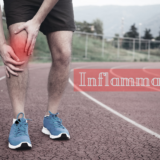







3 comments
Pingback: Anthony
pharmacy online
July 8, 2022 at 2:21 am
What’s up, yeah this post is truly good and I have learned a lot of things from it.
thanks.
Baaz
September 8, 2022 at 2:40 pm
Whoa! This blog looks exactly like my old one! It’s on a totally different subject but it has pretty much the same layout and design. Outstanding choice of colors!